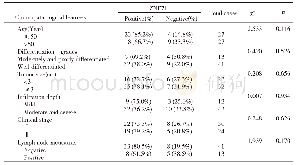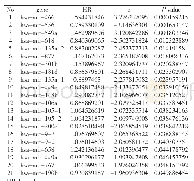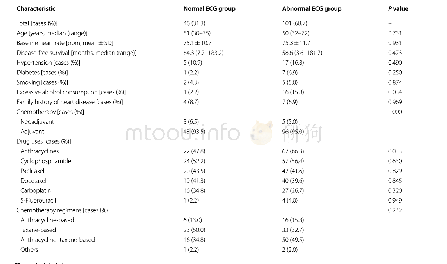《Table 1Transcriptomic subtypes of triple-negative breast cancer and potential therapeutic agents》
 提示:宽带有限、当前游客访问压缩模式
提示:宽带有限、当前游客访问压缩模式
本系列图表出处文件名:随高清版一同展现
《Applications of RNA Indexes for Precision Oncology in Breast Cancer》
Note:Data are obtained from[82].BL,basal-like;IM,immunomodulatory;M,mesenchymal;MSL,mesenchymal stem-like;LAR,luminal androgen receptor;UNS,unstable;PARP,poly(ADP-ribose)polymerase;EMT,epithelial-to-mesenchymal transition;m TOR,mammalian target
Using massively parallel m RNA sequencing,numerous transcripts that are differentially expressed between TNBC and non-TNBC have been identified[83].Based on the comprehensive transcriptomic analysis of 21 breast cancer datasets,Lehmann et al.classify TNBC into seven subtypes[82].These include two basal-like subtypes(BL1 and BL2),an immunomodulatory subtype(IM),a mesenchymal subtype(M),a mesenchymal stem-like subtype(MSL),a luminal androgen receptor subtype(LAR),and an unclassified set that is regarded as unstable(UNS)(Figure 1 and Table 1) .The BL1subtype strongly expresses specific genes that are related to cell proliferation and DNA damage response.It preferentially responds to cisplatin and poly(ADP-ribose)polymerase(PARP)inhibitors.The BL2 subtype is enriched with genes that are associated with growth factor pathways,indicating that growth factor inhibitors may be efficacious for the BL2subtype.The IM subtype possesses abundant genes that are involved in immune-mediated reactions,and programmed cell death 1/programmed death-ligand 1(PD1/PDL1)inhibitors are anticipated to be a hopeful therapeutic option for this subtype.Both the M and MSL subtypes specifically express genes that are relevant to cell motility,cellular differentiation,and growth factor pathways,while the MSL subtype expresses lower levels of proliferation genes than those present in the M subtype.The mammalian target of rapamycin(m TOR)inhibitors and epithelial-to-mesenchymal transition(EMT)-targeted agents are candidate drugs for these two subtypes.The LAR subtype is named for the AR enrichment,and antiandrogen treatments(e.g.,bicalutamide,an AR antagonist)are undergoing clinical trials[82,84,89].
| 图表编号 | XD0021322800 严禁用于非法目的 |
|---|---|
| 绘制时间 | 2018.04.01 |
| 作者 | Liming Ma、Zirui Liang、Hui Zhou、Lianghu Qu |
| 绘制单位 | Key Laboratory of Gene Engineering of the Ministry of Education, State Key Laboratory of Biocontrol, School of Life Sciences,Sun Yat-sen University、Key Laboratory of Gene Engineering of the Ministry of Education, State Key Laboratory of Biocontrol, School |
| 更多格式 | 高清、无水印(增值服务) |
查看“Table 1Transcriptomic subtypes of triple-negative breast cancer and potential therapeutic agents”的人还看了
-

- 表2 不同传播途径的患者HIV-1基因亚型检出情况Table 2 Comparison of HIV-1 subtypes in patients with different transmission routes
-

- Table 1.Correlation between expression of ZNF711 and clinicopathological features in cervical cancer
-

- Table 1.Information on 21 candidate miRNAs associated with OS of breast cancer patients.*Derived from the univariate Cox





